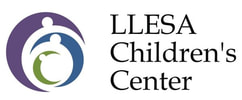About the Program:
Twos are between – not infants, not preschoolers. They may cling like an infant, and then venture out on their own. They are in what Jean Piaget called the Preoperational Stage, meaning that their need for autonomy results in “I do it myself,” and “no” when opposing authority. The two-year-old is dominated by impulses and feelings: wanting it means getting it, thinking it means having it, feeling it means doing it – all now! As teachers and adults, we help the child build control of their impulses. “Terrible” twos result when adults initiate a contest of wills. Therefore, providing choices when appropriate is very important. Refraining from using the words “no” and “don’t” also make the child less negative.
Two-year-olds are beginning to develop language and are ready for verbal exchange and play. They love music, stories, and conversation. Their physical development is the foundation for progress. They are increasing in size and strength which enables them to do more with less adult protection and guidance. Their motor abilities progress from broad to more precise. Two-year-olds can walk and run, and all their impulses tell them to use these skills. They don’t like to be confined and don’t yet recognize danger. Each day we provide safe and interesting opportunities for exploration and physical activity.
Two-year-olds also use all five senses to investigate and evaluate their world. Their efforts to learn about their world involve the manipulation of raw materials rather than making representations. Therefore, our emphasis is on process, not product, so that we can encourage pride in their accomplishments. Other children are very interesting to two-year-olds; however, they have not learned how to play with others quite yet. They love to play alongside of others in “parallel” play. At this stage, possession is more important than sharing to the child. As the child approaches three years old they begin to play with other children more. Two-year-olds are ready and enjoy playing alone for short periods of time. We provide materials, equipment, supervision, and nurturing to meet the needs of the two-year-old child in a safe, fun and interesting environment.
Daily activities are planned around the following developmental needs with activities in two or more areas at once:
Activities are designed to assist the child in becoming more independent. Children are allowed to do as much for themselves as they can, with caregivers assisting when needed. These activities help teach competence and confidence giving the two-year-old a sense of autonomy to satisfy their need for “I do it.”
Two-year-olds are beginning to develop language and are ready for verbal exchange and play. They love music, stories, and conversation. Their physical development is the foundation for progress. They are increasing in size and strength which enables them to do more with less adult protection and guidance. Their motor abilities progress from broad to more precise. Two-year-olds can walk and run, and all their impulses tell them to use these skills. They don’t like to be confined and don’t yet recognize danger. Each day we provide safe and interesting opportunities for exploration and physical activity.
Two-year-olds also use all five senses to investigate and evaluate their world. Their efforts to learn about their world involve the manipulation of raw materials rather than making representations. Therefore, our emphasis is on process, not product, so that we can encourage pride in their accomplishments. Other children are very interesting to two-year-olds; however, they have not learned how to play with others quite yet. They love to play alongside of others in “parallel” play. At this stage, possession is more important than sharing to the child. As the child approaches three years old they begin to play with other children more. Two-year-olds are ready and enjoy playing alone for short periods of time. We provide materials, equipment, supervision, and nurturing to meet the needs of the two-year-old child in a safe, fun and interesting environment.
Daily activities are planned around the following developmental needs with activities in two or more areas at once:
- Sensory Experiences – cornmeal, birdseed, rice, beans, water, rock salt, ice, glue, sand, clay, playdough
- Cognitive & Language Development – stories, songs, flannel board, tape recording, puzzles, blocks, magnets, dramatic play
- Self Help Skills – hand washing, toileting independence, clean up, responsibility for projects and lunch items, dressing
- Social & Emotional Development – dramatic play, group activities of all kinds, conflict resolution
- Fine Motor Development – pegs & boards, bristle blocks, painting, pencils, crayons, scissors, markers, beads & strings, gluing, tons, puzzles, toys
- Gross Motor Development – climbing, running, walking, jumping, crawling, digging, dancing, sliding, pedaling, throwing, pouring, pushing, pulling
- Creative Expression – playdough, arts & crafts, sandbox, music
Activities are designed to assist the child in becoming more independent. Children are allowed to do as much for themselves as they can, with caregivers assisting when needed. These activities help teach competence and confidence giving the two-year-old a sense of autonomy to satisfy their need for “I do it.”
Proudly powered by Weebly
